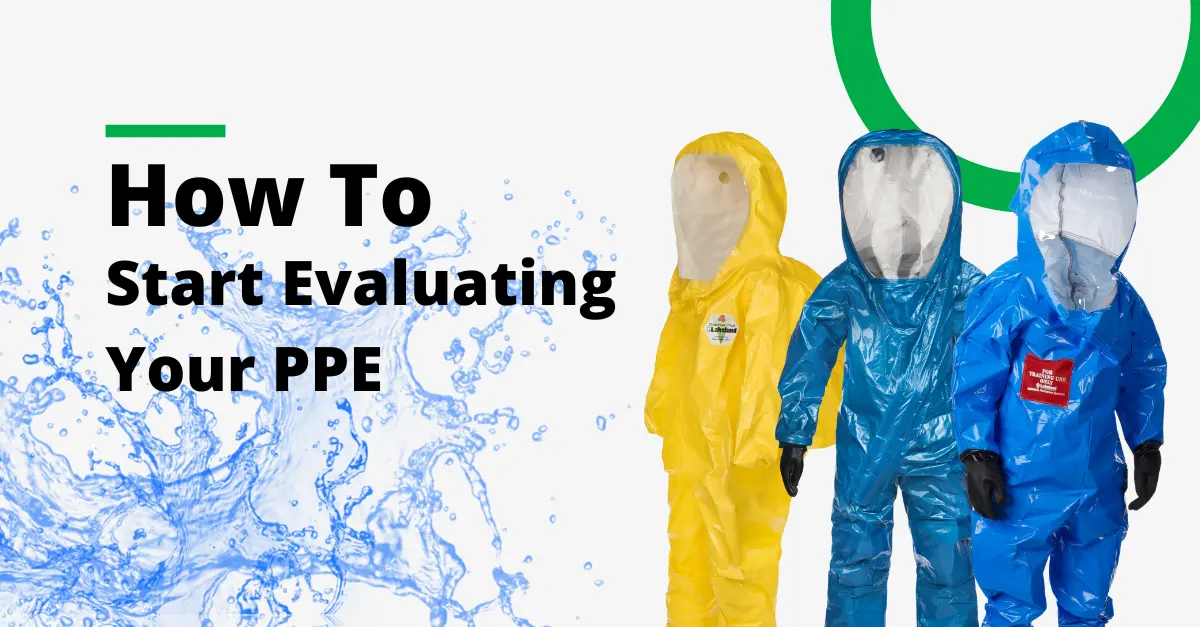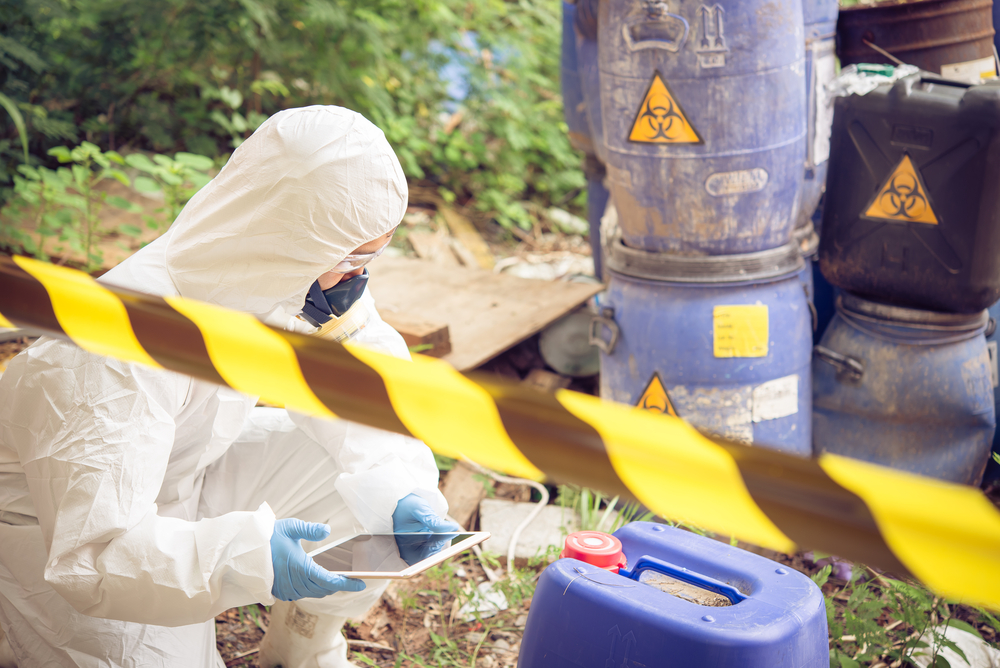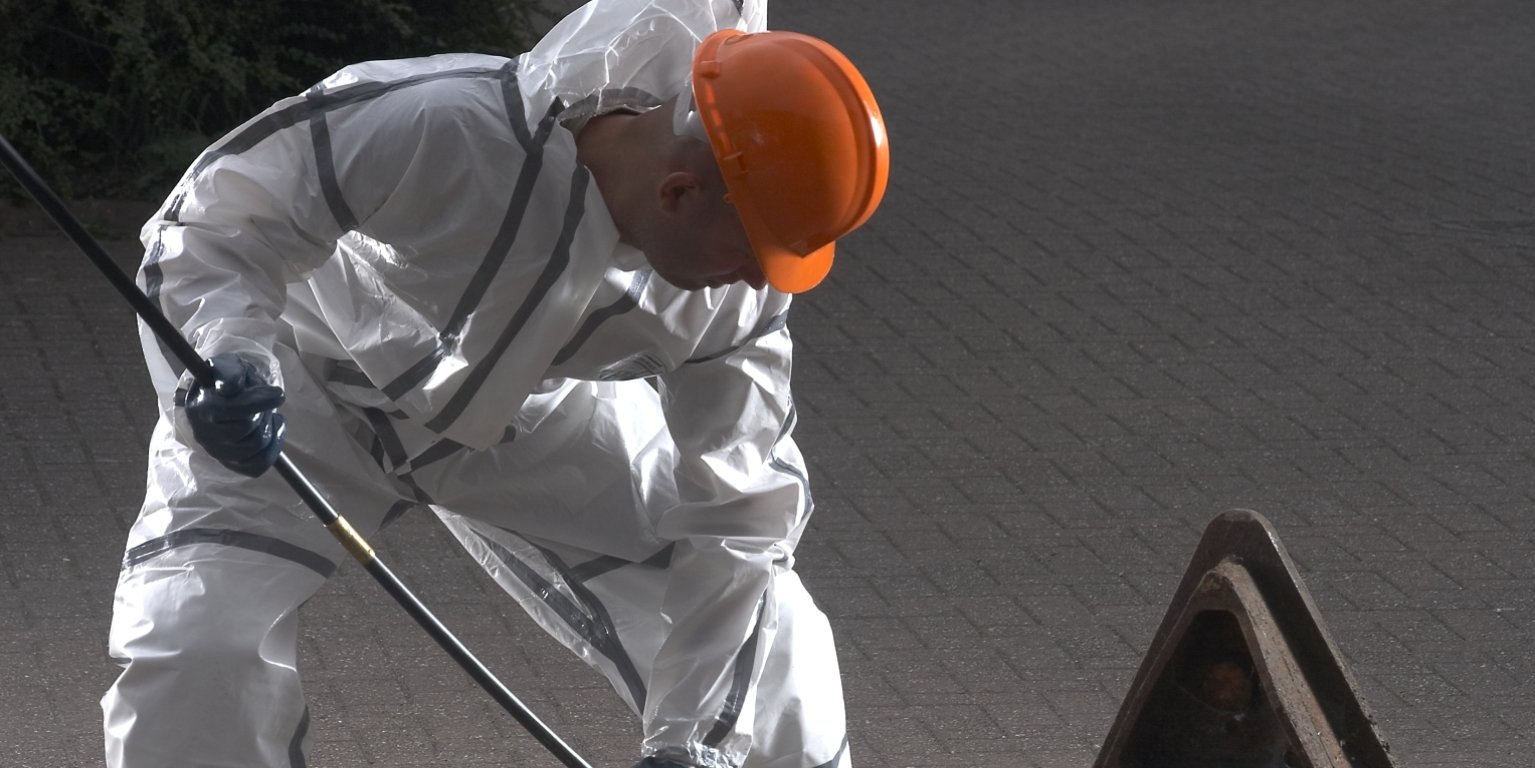Protecting people should be transparent. When you empower an employee with the right PPE and knowledge of the hazards they’re handling, you’re providing a greater level of confidence in safely completing the task at hand. Lakeland’s four decades of experience in designing and manufacturing quality chemical suits has given us many opportunities to find and support ways to better educate users on how to effectively protect themselves against a range of hazardous chemicals.
During the chemical or hazmat suit selection process, we’ve noticed that the methods commonly used to evaluate PPE might not be as secure as safety managers might think – leading to the chance that workers believe they’re protected when they aren’t.
Read on to learn more on evaluating hazmat suits for chemical handling.
Starting Your Hazmat Suit Selection
When speaking with customers, most conversations will start with: “What is the permeation test breakthrough result against XYZ chemical?”
And many customers base their first approval or rejection of a particular hazmat suit on the answer to this question. It is the deal breaker. A good result is interpreted as “the suit is safe to wear to protect against this chemical”. Safe in this knowledge, the potential customer will proceed to consider price, obtain samples for trial, and, we hope, buy a Lakeland chemical suit.
However, the sometimes-exclusive focus on permeation testing can potentially be misleading for several reasons. Let’s dive deeper into what permeation is, and what it tells us about a hazmat suit.
What is Permeation?
Permeation is the process by which a chemical will pass through an apparently “solid” barrier, such as the fabric of a chemical suit. The term “will” pass through is correct; permeation will happen. It cannot be stopped indefinitely – merely delayed or slowed.
The molecules of the chemical will, at some point, pass between the molecules of the barrier and emerge at the other side. The rate at which this occurs relates to relative molecular size, shape, polarity, and so on. Temperature also plays a critical role.
Importantly, permeation through the fabric is different to penetration through holes or gaps in the suit construction such as zips and seams, but the result is the same: the chemical ends up on the wrong side of a barrier intended to keep it out.
What is the Permeation Resistance Test?
The Permeation Resistance Test is a simple test designed to measure this process. A test cell is divided into two halves by a sample of the suit fabric. The chemical is introduced into one side. Eventually, its molecules will permeate through the fabric sample.
The air in the other side of the cell is sampled by a gas chromatograph to identify the chemical. This test can produce a range of information. However, the key output required by both the US version (ASTM F739) and the EN version (EN 5629) is the “breakthrough time” in minutes, more correctly termed the “Normalized Breakthrough”).
Perhaps understandably, given the choice of the term “breakthrough”, this is interpreted by many as “the time at which the chemical first breaks through the fabric”, and therefore leads to an assumption of safety.
This seems straightforward. Unfortunately, it is more complex than it looks, and the assumption of safety is flawed in terms of indicating protection against a chemical, for several reasons:
-
- It is only a test of the fabric
The risk of chemical permeation through the hazmat suit fabric is important – but it is not the major risk. There is a greater probably that ingress into the suit will be through its construction (seams, zipper, etc.) or, even more likely, through other interface points such as between the hood and facemask or sleeves and gloves or ankles and boots. Since the permeation test only assesses fabric resistance, we can’t look to it alone to make an educated assessment on safe-wear times.
-
- It ignores temperature
Temperature majorly influences the rate of permeation. The higher the temperature, the faster a chemical will permeate through a barrier. In fact, a general rule of thumb is that for every 10oC (18oF) rise in temperature the rate of permeation may double.
Because the purpose of the permeation test is comparison of fabric performance, it is always conducted at a temperature of around 23oC. In the real world, where temperatures can vary, the permeation breakthrough time indicated by the test may simply be wrong. At 33oC, the breakthrough time may be half of that indicated by the test.
-
- It is not very accurate
One of the problems with conducting the permeation test is identifying the chemical coming through the fabric at a molecular level. Permeation deals with very small volumes of a chemical – measured in micrograms (µg) – a millionth of a gram. The challenge is finding a way to identify it in such small quantities. With many common chemicals this can be relatively easy. On others it can be problematic. In fact, on some occasions laboratories have advised they are unable to do a test on a specific chemical because that didn’t know of any method to identify it.
Even when an identification method can be specified, identifying it at such low levels is problematic. Often the Minimum Detection Rate (the smallest volume that can be measured) varies with different chemicals. Because of the variables, the standard requirement is to conduct five tests on five samples and use the lowest value (i.e. the shortest breakthrough time) as the final result. Is five samples statistically reliable? It is quite possible that a sixth test, if conducted, might be lower than the previous five.
Practical experience confirms this uncertainty. Send five samples to five different laboratories for the same test and five different results can be expected.
So it should never be assumed that a single permeation test gives a reliable indication of reality.
-
- It is widely misinterpreted
Most users interpret the breakthrough time as “the time until the chemical has broken through the fabric”, but this is a very common misunderstanding. In fact, the breakthrough time is measured at a point when the rate or speed of permeation reaches a particular level.
This is because the purpose of the test is performance comparison (in the same way that performance of cars is often measured as the time to reach a particular speed).
Given that it must take at least some time to reach the breakthrough threshold speed, some of the chemical must permeate through the hazmat suit before it is reached – and may have contaminated the wearer. Is this amount of chemical harmful? That depends on the toxicity of the chemical itself.
It’s important to note…
Different test standards measure “breakthrough” at different rates.
ASTM F739 measures it at a speed of 0.1µg/cm2/min, while EN 6529 measures it at a speed of 1.0µg/cm2/min. In other words, the threshold speed is 10 times lower in the US ASTM test than in the European EN test, explaining why the breakthrough time in the two tests is often different and lower in the US version.
-
- It ignores the toxicity of the chemical.
Every chemical has a different toxicity. Some are highly toxic, requiring only small amounts to cause harm, others have low toxicity, requiring large amounts to cause harm. Any assessment of whether a hazmat suit is safe to wear should make some consideration of toxicity. The permeation test, however, ignores it, treating every chemical as the same and merely measuring a time until a specific permeation rate is reached.
With all the above, we find that the permeation test alone should not be used as an indication of how long a chemical suit can be safely worn (i.e., a “Safe-Wear Time”) or even that it is safe to wear at all. The fact is, this test was never intended to indicate of safety, but to show if one fabric performs better than another.
Supporting evidence for this can further be found by checking the fine print that accompanies the permeation test dated provided by any reputable manufacturer of hazmat suits.
The conclusion must be that the permeation resistance test breakthrough, while making a useful contribution to hazmat suit selection, cannot alone act as an indicator that the suit you choose is safe to wear.




